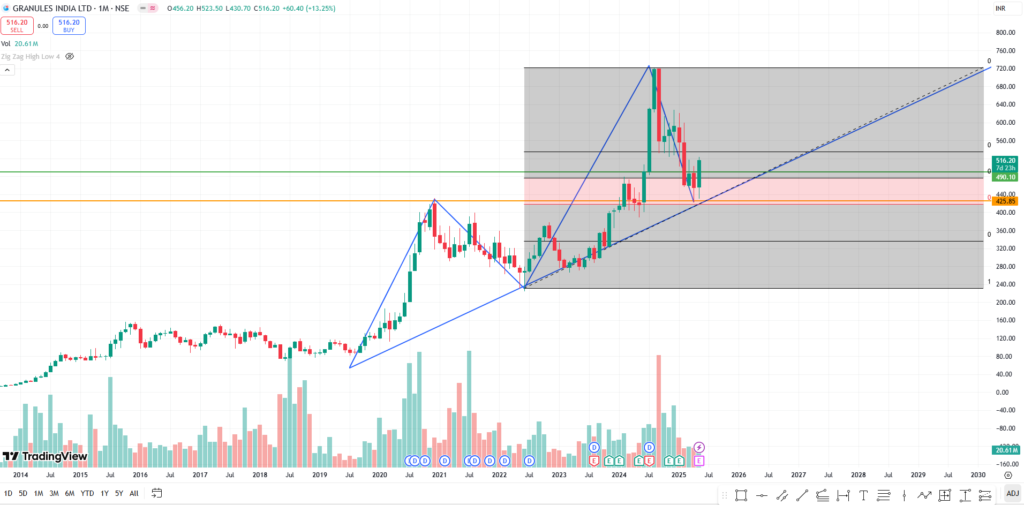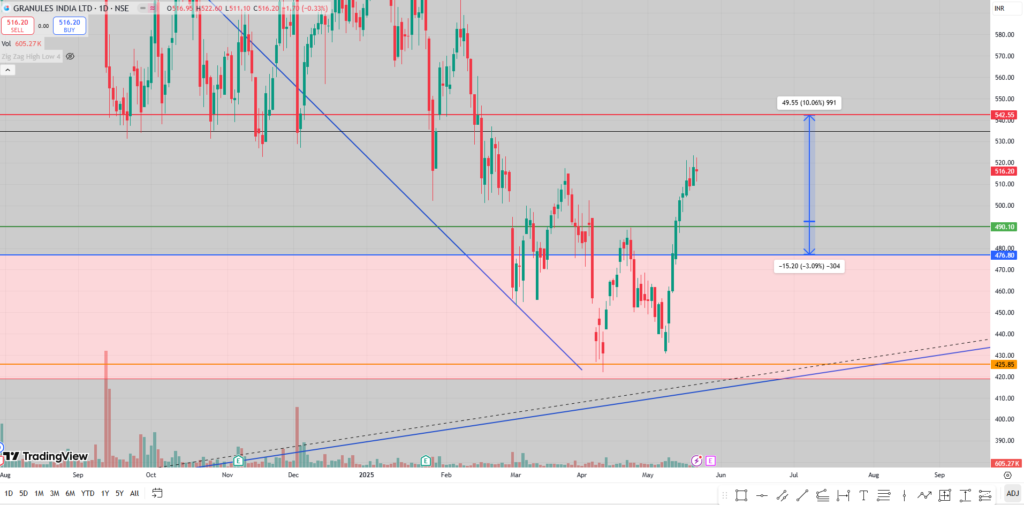In the world of trading, following market trends is one of the most reliable strategies to maximize returns. The Trend Follow Swing Trading Strategy combines the best of both swing trading and trend analysis, allowing traders to ride price movements over a few days to weeks. This strategy focuses on entering trades in the direction of the prevailing trend and exiting before it reverses.
Whether you’re a beginner or a seasoned trader, understanding key principles is essential. In this guide, we highlight the Top 10 Points to Remember to help you execute Trend Follow Swing Trading Strategy effectively and profitably in 2025.
Table of Contents
1. Trade Only in an Established Uptrend
Before applying the Trend Follow Swing Trading Strategy, ensure that the stock or asset is in a clear uptrend. This can be confirmed by identifying a series of higher highs and higher lows. Swing trading works best when applied to stocks that are already showing strong bullish momentum. Avoid sideways or weak trends as they offer less predictability and lower profitability.
2. Use Multiple Timeframes for Accuracy
For effective swing trading, begin with higher timeframes (monthly or weekly) to spot long-term trends. These act as your guiding framework. Then, shift to lower timeframes like daily or 4-hour charts to pinpoint entries and confirmations. This top-down approach ensures that your trades align with the broader market direction, enhancing your probability of success.
3. Expect a Natural Correction After an Uptrend
After every strong uptrend, markets naturally correct. This is not a signal to panic, but rather a healthy pullback. Recognizing this correction phase is crucial in a Trend Follow Swing Trading Strategy. Corrections offer traders a golden opportunity to prepare for a re-entry once the trend resumes or reverses on strong support levels.
4. Identify the Reversal Zone
The trend may reverse or continue from key areas such as:
- Previous resistance turned support
- Demand zones
- Trendlines
- Chart patterns like triangle, channel patterns
- Fibonacci retracement levels (usually 38.2%, 50%, or 61.8%)
These areas act as strong decision zones. Use technical tools to validate your analysis. If price holds and reacts positively in these zones, it could signal a strong reversal or continuation.
5. Confirm the Setup Using Trend and Structure
Once you’ve identified the reversal area, confirm the stock is still in an uptrend on a broader scale. Look for evidence that the correction has matured and a new trend is about to begin. Confirmation may come from candlestick behavior, momentum indicators, or price structure at key zones. Only proceed if the setup aligns with both trend and structure.
6. Entry After a Higher High in Lower Timeframes
In the 4-hour or daily timeframe, a breakout above previous resistance levels is your cue. The ideal entry point in a Trend Follow Swing Trading Strategy is when a strong green candle closes above resistance, forming a higher high. This indicates bullish confirmation and provides a solid base for entering the trade. Never enter a trade during correction; wait for breakout confirmation.
7. Set Target at 10% Above Entry (Risk-Reward 3:1)
For every entry, define a realistic target. In swing trading, a 10% profit target is generally considered ideal. This fits well within the risk-to-reward ratio of 3:1, which means for every 1 unit of risk, you expect 3 units of return. This ratio helps you maintain profitability even with a lower win rate.
8. Stop Loss Placement Below Entry (Above 3% Risk)
Risk management is the backbone of Any Swing Trading Strategy like Trend Follow Swing Trading Strategy. Set your stop loss above 3% below the entry point, ideally below the last swing low or major support area. This aligns with your risk-reward ratio and protects your capital from major drawdowns. Always define your stop loss before entering a trade.
9. Select the Right Stocks for Swing Trading
Stock selection plays a vital role in the Trend Follow Swing Trading Strategy. Choose:
- High-volume stocks for smooth execution (mid-cap and large-cap stocks preferred)
- Stocks with strong technical setups
- Stocks backed by positive news, earnings reports, or industry growth
- Avoid illiquid or volatile penny stocks Combine technical and fundamental analysis to boost your edge.
10. Stay Disciplined and Consistent
The most important factor in any trading strategy or Trend Follow Swing Trading Strategy is discipline. Follow your setup without emotions, never chase the market, and stick to your plan. Keep a trading journal to record each trade and analyze your performance. Consistency, along with continuous learning, leads to mastery of the Trend Follow Swing Trading Strategy.
Example of Trend Follow Swing Trading Strategy
Example: Trend Follow Swing Trading Strategy – Granules India Ltd
Analysis in Monthly Higher timeframe

1) Uptrend Formation:
Granules India Ltd stock was in a strong uptrend, consistently forming higher highs and higher lows, indicating bullish momentum.
2) Correction Phase:
After reaching a recent high, the stock entered a correction phase, pulling back from its peak price.
3) Support Confirmation:
The correction halted around a previous resistance zone, which now acted as support, strengthening the potential for a trend reversal.
4) Trendline Support:
A long-term trendline, drawn from earlier swing lows, aligned perfectly with the support zone, providing additional confirmation.
5) Fibonacci Retracement Level:
The stock retraced close to the 61.8% Fibonacci level, a key reversal zone often respected by institutional traders.
6) Reversal Signal:
The confluence of support from resistance-turned-support, trendline, and 61.8% retracement provided a strong indication of a trend reversal.
7) Confirmation in Lower Timeframe:
- If the analysis was done on a monthly timeframe, then confirm the trend reversal in the daily chart.
- If analyzed in a weekly timeframe, check confirmation in the 4-hour chart.
Trade Execution in Daily Lower Timeframe

- Daily Timeframe Analysis:
After confirming the trend reversal on the higher timeframe (monthly/weekly), we switch to the daily chart to refine the entry. - Identified Resistance Level:
A resistance zone at ₹490 was clearly marked and highlighted as a green line on the chart. - Bullish Breakout:
A strong bullish green candle closed above ₹490, confirming a breakout through the resistance. - Entry Point:
Based on the breakout, the entry was triggered at ₹492, slightly above the resistance zone. - Target Point:
The target is set at ₹540, highlighted as a red line, which represents approximately a 10% upside from the breakout point. - Stop Loss Placement:
The stop loss is placed below the resistance level at ₹475, shown as a blue line, following the risk management rule. - Risk-Reward Ratio:
The trade offers a healthy risk-reward ratio of nearly 3:1, which is ideal for swing trading setups. - Trade Management:
After entering the trade at ₹492, you should wait patiently for either the target of ₹540 to hit or the stop loss at ₹475, depending on market movement.
Mastering the Trend Follow Swing Trading Strategy takes time, patience, and discipline. By applying these 10 crucial points, traders can enhance their entry accuracy, manage risk effectively, and boost their profitability. Always use a combination of technical and fundamental tools, stick to your rules, and maintain a consistent approach to succeed in swing trading.
Whether you’re just starting or refining your existing strategy, this guide serves as a foundational blueprint to grow as a confident and profitable swing trader.





